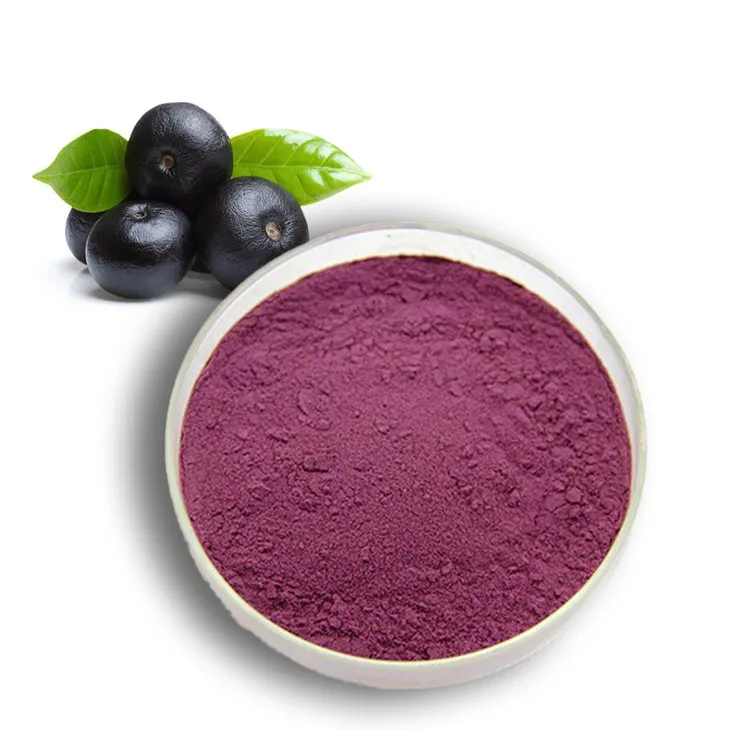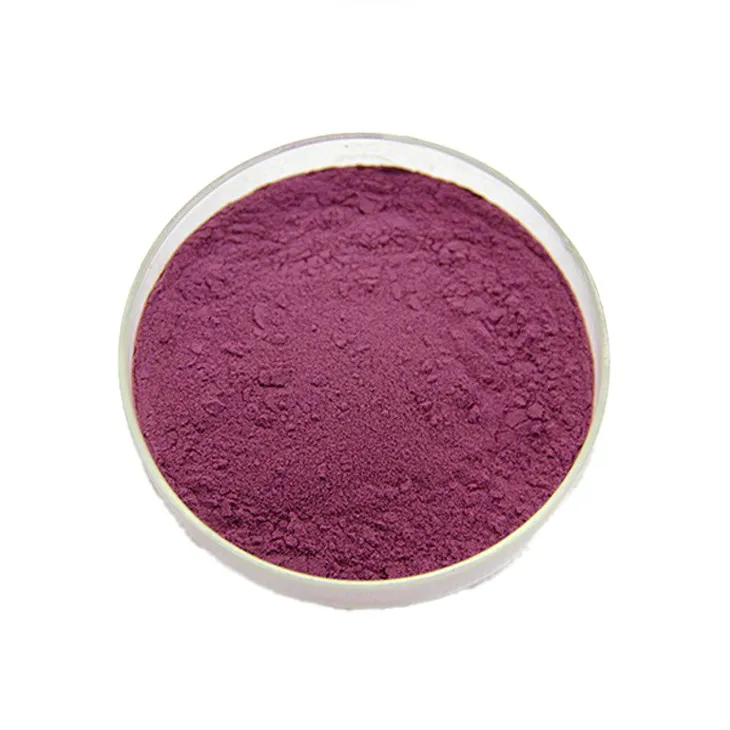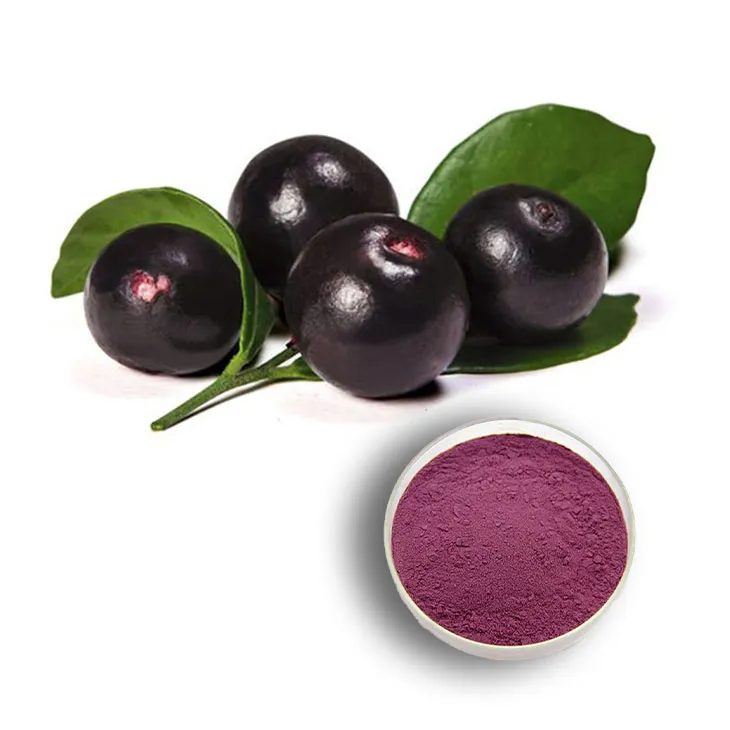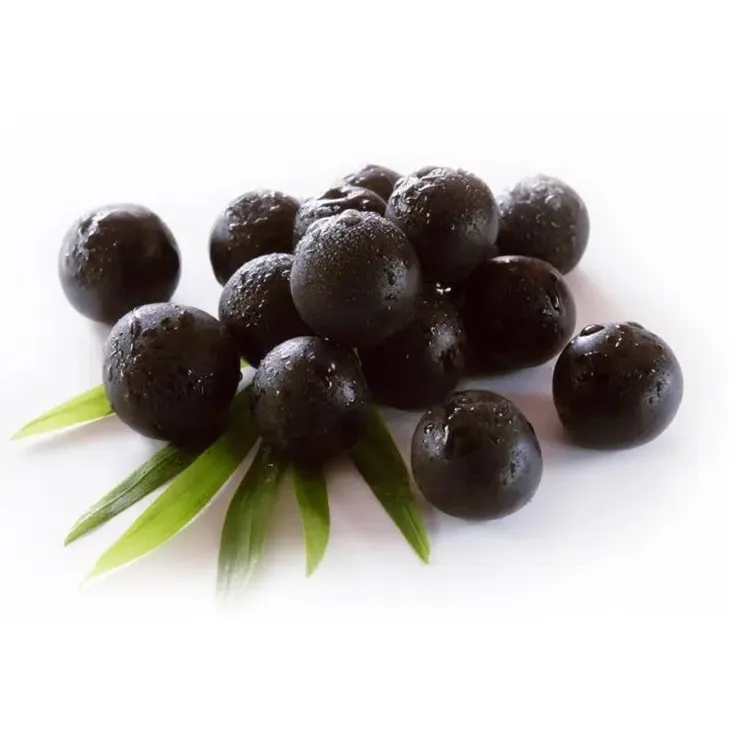- 0086-571-85302990
- sales@greenskybio.com
How to extract acai berry extract from plants?
2024-11-28

1. Introduction to Acai Berries
Acai berries are small, dark - purple berries that come from the acai palm tree (Euterpe oleracea), which is native to the Amazon rainforest in South America. These berries have gained significant popularity in recent years due to their high nutritional value and potential health benefits. They are rich in antioxidants, such as anthocyanins, flavonoids, and phenolic acids, which are believed to play a role in combating oxidative stress, reducing inflammation, and improving overall health.

2. Harvesting of Acai Berries
The harvesting of acai berries is a crucial first step in the extraction process.
2.1. Ripeness Consideration
Timing is essential when it comes to harvesting acai berries. They need to be picked at the right stage of ripeness. Acai berries are typically harvested when they are dark - purple in color, indicating that they are fully ripe. Unripe berries may not have developed their full nutritional profile and may also be more difficult to extract effectively.
2.2. Harvesting Methods
In their native regions, acai berries are often harvested by local communities using traditional methods. This usually involves climbing the acai palm trees and cutting down the clusters of berries. However, with the increasing commercial demand for acai products, more mechanized harvesting methods are also being developed. These methods aim to improve efficiency while still maintaining the quality of the harvested berries.

3. Traditional Extraction Methods
After harvesting, traditional extraction methods can be employed to obtain the Acai Berry Extract.
3.1. Maceration
Maceration is one of the most common traditional extraction techniques. In this process, the acai berries are soaked in a suitable medium, such as a solvent or a liquid that can help dissolve the desired compounds. For example, water or ethanol can be used as the maceration medium. The berries are left in the medium for a period of time, usually several hours to a few days, depending on the desired extraction yield. During this time, the solvent penetrates the cells of the berries and extracts the bioactive compounds, such as antioxidants.
3.2. Filtration
After maceration, the next step is filtration. The macerated mixture contains both the extract and solid debris, such as berry pulp and seeds. Filtration is used to separate the liquid extract from the solid components. This can be achieved using simple filtration methods, such as using filter paper in a funnel or more advanced filtration systems for larger - scale extractions.
3.3. Concentration
The filtered extract may still contain a large amount of solvent. To obtain a more concentrated Acai Berry Extract, the solvent can be removed through evaporation. This can be done using gentle heat or under reduced pressure to avoid damaging the bioactive compounds. As the solvent evaporates, the concentration of the extract increases, making it more suitable for use in various products.

4. Modern Extraction Methods
In addition to traditional methods, modern extraction techniques offer more efficient and precise ways to obtain Acai Berry Extract.
4.1. Supercritical Fluid Extraction (SFE)
Supercritical fluid extraction is a highly efficient and clean extraction method. In this process, a supercritical fluid, such as carbon dioxide (CO₂), is used as the extracting agent. CO₂ is in a supercritical state when it is above its critical temperature and pressure. In this state, it has properties of both a gas and a liquid, which makes it an excellent solvent for extracting bioactive compounds from acai berries.
The advantages of SFE are numerous. Firstly, it is a non - toxic and environmentally friendly method as CO₂ is a natural gas. Secondly, it can be highly selective, meaning that it can target specific compounds in the acai berries for extraction. Thirdly, it provides a high - quality extract with minimal degradation of the bioactive compounds. The process involves passing the supercritical CO₂ through the acai berries, which extracts the desired compounds. The extract can then be separated from the CO₂ by reducing the pressure, allowing the CO₂ to return to its gaseous state and leaving behind the concentrated extract.
4.2. Microwave - Assisted Extraction (MAE)
Microwave - assisted extraction is another modern technique. In MAE, microwaves are used to heat the acai berries and the extraction solvent. The microwaves generate heat within the sample, which accelerates the extraction process. This method can significantly reduce the extraction time compared to traditional methods. It also has the potential to improve the extraction yield and the quality of the extract. However, careful control of the microwave power and extraction time is required to avoid overheating and degradation of the bioactive compounds.
4.3. Ultrasound - Assisted Extraction (UAE)
Ultrasound - assisted extraction utilizes ultrasonic waves to enhance the extraction process. The ultrasonic waves create cavitation bubbles in the extraction medium, which implode and generate high - pressure and high - temperature microenvironments. These microenvironments help to break open the cells of the acai berries, facilitating the release of the bioactive compounds into the extraction medium. UAE can improve the extraction efficiency, reduce the extraction time, and increase the yield of the acai berry extract.

5. Quality Control and Analysis of Acai Berry Extract
Once the acai berry extract has been obtained, quality control and analysis are essential to ensure its safety and effectiveness.
5.1. Chemical Analysis
Chemical analysis is used to determine the composition of the acai berry extract. This includes the identification and quantification of the bioactive compounds, such as antioxidants, vitamins, and minerals. Techniques such as high - performance liquid chromatography (HPLC) and gas chromatography - mass spectrometry (GC - MS) can be used to analyze the chemical constituents of the extract.
5.2. Microbiological Testing
Microbiological testing is crucial to ensure that the acai berry extract is free from harmful microorganisms, such as bacteria, yeasts, and molds. Standard microbiological tests, including total plate count, coliform count, and pathogen detection, should be carried out on the extract.
5.3. Stability Testing
Stability testing is performed to determine how the acai berry extract behaves over time. This includes testing its stability under different storage conditions, such as temperature, humidity, and light exposure. Stability testing helps to predict the shelf - life of the extract and ensure that it maintains its quality and effectiveness during storage and use.
6. Applications of Acai Berry Extract
The acai berry extract, with its high antioxidant content and potential health benefits, has a wide range of applications in various industries.
6.1. Food and Beverage Industry
In the food and beverage industry, acai berry extract is used in a variety of products. It is a popular ingredient in juices, smoothies, and energy drinks due to its antioxidant properties and unique flavor. It can also be added to yogurt, ice cream, and other dairy products to enhance their nutritional value.
6.2. Dietary Supplement Industry
The dietary supplement industry is another major user of acai berry extract. It is often formulated into pills, capsules, and powders, which are sold as dietary supplements. These products are promoted for their potential health benefits, such as improving cardiovascular health, boosting the immune system, and promoting weight loss.
6.3. Cosmetic and Skincare Industry
In the cosmetic and skincare industry, acai berry extract is used in creams, lotions, and serums. Its antioxidant properties make it suitable for use in anti - aging products, as it can help to protect the skin from oxidative damage caused by free radicals. It can also have moisturizing and anti - inflammatory effects on the skin.
7. Conclusion
Extracting acai berry extract from plants involves a series of important steps, from harvesting the berries at the right time to using appropriate extraction methods, whether traditional or modern. Quality control and analysis are necessary to ensure the safety and effectiveness of the extract. With its numerous potential health benefits and wide range of applications, acai berry extract has become an increasingly valuable product in various industries. Continued research and development in extraction techniques and applications are likely to further expand the potential of acai berry extract in the future.
FAQ:
Q1: What is the best time to harvest acai berries for extraction?
Acai berries need to be picked at the right stage of ripeness. Harvesting is time - sensitive to ensure the quality of the berries for extraction. However, the exact best time may vary depending on factors such as the specific variety of acai plants and the local environmental conditions.
Q2: What are the advantages of supercritical fluid extraction in acai berry extract?
Supercritical fluid extraction is a more efficient and clean extraction method. It can help to obtain a purer acai berry extract with less contamination from unwanted substances compared to some traditional extraction methods. Also, it may preserve more of the beneficial components in the acai berries due to its relatively gentle extraction process.
Q3: Can you briefly describe the maceration process in acai berry extraction?
Maceration in acai berry extraction involves soaking the berries in a suitable medium. This helps to break down the cell walls of the berries and release the components that are desired for the extract. The medium used should be carefully selected to ensure proper extraction and compatibility with further processing steps.
Q4: Why is acai berry extract high in antioxidant content?
The acai berries themselves are rich in various bioactive compounds that have antioxidant properties. During the extraction process, these antioxidant - rich components are transferred from the berries to the extract. The extraction methods are designed to preserve and concentrate these beneficial antioxidants.
Q5: In which products can acai berry extract be used?
Acai berry extract can be used in a variety of products. It is commonly found in juices, pills, and creams. In juices, it can add a unique flavor and provide health - promoting properties. In pills, it can be a concentrated form for dietary supplementation. In creams, it may offer antioxidant benefits for skin health.
Related literature
- The Extraction and Characterization of Acai Berry Bioactive Compounds"
- "Optimization of Acai Berry Extract Production: A Review"
- "Acai Berry Extract: From Plant to Product - An Overview"
- ▶ Hesperidin
- ▶ citrus bioflavonoids
- ▶ plant extract
- ▶ lycopene
- ▶ Diosmin
- ▶ Grape seed extract
- ▶ Sea buckthorn Juice Powder
- ▶ Beetroot powder
- ▶ Hops Extract
- ▶ Artichoke Extract
- ▶ Reishi mushroom extract
- ▶ Astaxanthin
- ▶ Green Tea Extract
- ▶ Curcumin Extract
- ▶ Horse Chestnut Extract
- ▶ Other Problems
- ▶ Boswellia Serrata Extract
- ▶ Resveratrol Extract
- ▶ Marigold Extract
- ▶ Grape Leaf Extract
- ▶ blog3
- ▶ blog4
-
The Best Apple Cider Vinegar Powder in 2024.
2024-11-28
-
The Maca Extract Brands Most Worth Buying.
2024-11-28
-
The best cactus extract on the market.
2024-11-28
-
High - quality lily extract products.
2024-11-28
-
Elderberry Extract
2024-11-28
-
Aguaje Extract
2024-11-28
-
Lemon Balm Extract
2024-11-28
-
Resveratrol extract
2024-11-28
-
Nettle leaf extract
2024-11-28
-
Citrus Aurantium Extract
2024-11-28
-
Mulberry Extract
2024-11-28
-
Grapefruit Seed Extract Powder
2024-11-28
-
Moringa powder
2024-11-28
-
Acai Berry Extract
2024-11-28




















